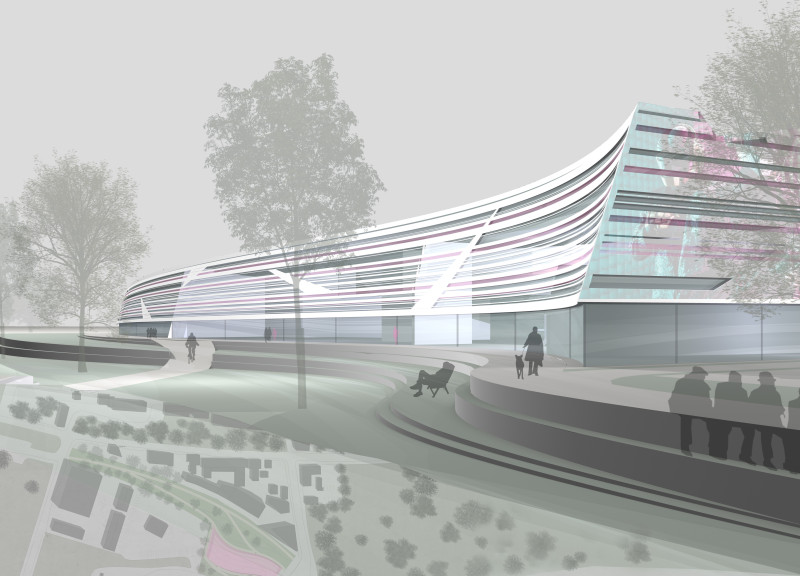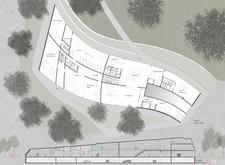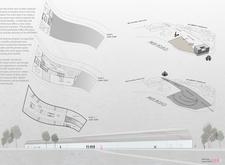5 key facts about this project
### Overview
The architectural design for the London Internet Museum is strategically located near City Airport and aims to function as both a cultural institution and a community hub, enhancing interaction with the nearby Victoria Gardens. The design seeks to embody the dynamic and multifaceted nature of the digital age while promoting accessibility for a diverse audience.
### Concept and Spatial Organization
The museum's concept focuses on the visualization of the internet's inherent dynamism, represented through an undulating form that contrasts with the surrounding rigid structures. This organic shape facilitates movement and interaction, integrating the museum with a green landscape. The spatial organization efficiently distinguishes between public and private areas, with multifunctional open spaces that accommodate events, flexible exhibition zones, and dedicated library and learning environments that foster education and research. Additionally, the inclusion of a café and museum shop provides comfortable settings for visitor engagement.
### Materiality and Unique Features
Modern materials play a crucial role in the design, enhancing both aesthetic appeal and functional performance. The façade utilizes LED strips for dynamic visual communication, responding to visitor interaction in real time, while extensive glass elements ensure transparency, connecting interior and exterior spaces and maximizing natural light. Concrete and steel provide structural integrity and durability, reinforcing the building's contemporary character. A key feature is the responsive façade that adapts to changing exhibits, symbolizing the evolving nature of the internet. The surrounding green space further promotes sustainability, fostering a tranquil environment that encourages exploration and leisure among visitors.





















































